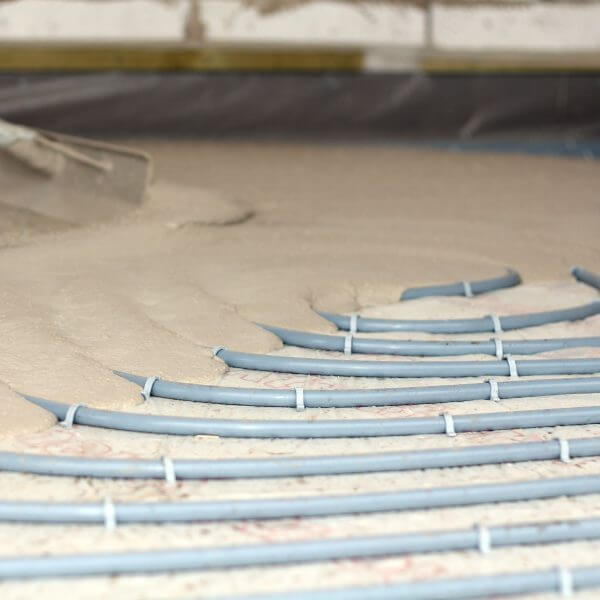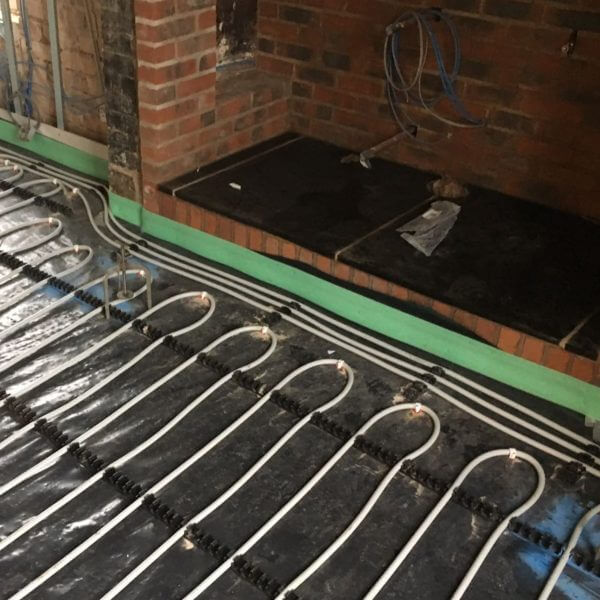Preparing Your Liquid Screed Floor for the Final Floor Covering
What is your final floor covering for your heating? If it’s underfloor heating for tiled floors or any other material that requires adhesive to an anhydrite floor screed, you will need your screed sanded and moisture tested before priming with an epoxy primer.
Does Liquid Screed Need Sanding?
Sanding is required for laitance removal and to help it absorb a primer. Early sanding of your floor will improve screed drying time by removing the laitance, allowing moisture to escape quickly.
Sanding should be carried out using an orbital sanding machine with an integrated vacuum. This should be fitted with a 60-grit sandpaper or carborundum disc.
Please note that sanding is to remove laitance/surface contamination and create a surface with good adhesion. It is not to remove the screed depth.
Underfloor Heating Commissioning
Your underfloor heating system must be commissioned prior to the application of any final floor finishes. This is to ensure that any remaining moisture deep in the screed is forced out and conditions the screed to thermal movement before the application of final floor coverings. This is essential in underfloor heating for wooden flooring, tiled flooring, or any other surface.
The following are general commissioning instructions. Your underfloor heating installer should have given you specific instructions for your property.
- Commission the system at ambient floor temperatures for 24 hours.
- Approximately 18 degrees or the lowest manifold temperature.
- Raise the flow temperature by up to 5 degrees per day thereafter until the optimum running temperature is reached
- This should be no higher than 50 degrees celcius.
- This should then be maintained for 7 days prior to the temperature being reduced by 5 degrees per day back to the starting point.
- The system should then be turned off and allowed to cool for 48 hours before moisture testing is carried out.
- For underfloor heating for tiled floors, heating should not be switched back on for 14 days after tiling; it can then be brought up to the operating temperature gradually.
How to Check for Moisture in Screed
Before priming, the floor screed should be moisture tested for any remaining moisture using a digital hygrometer, carbide bomb or oven test. Moisture levels should be below 75% relative humidity (RH) or 0.5% moisture before priming can take place.
It is essential to ensure that the screed is fully dried out prior to the application of final floor finishes. Your floor covering installer or Easyflow should carry out one of these tests before deciding to apply your floor finish.
Priming the Floor
EasyFlow liquid floor screed will require priming prior to application of floor coverings in order to seal the porous surface of the screed and to prevent moisture from adhesives or smoothing compounds from leaching into the floor screed.
Primer also acts as a barrier between the screed and any cement-based smoothing compound or adhesive that may be used. (Compatible gypsum-based adhesives and smoothing compounds are also available.)
We recommend the use of primers that are either acrylic dispersion or water-based epoxy.




Where To Find Us